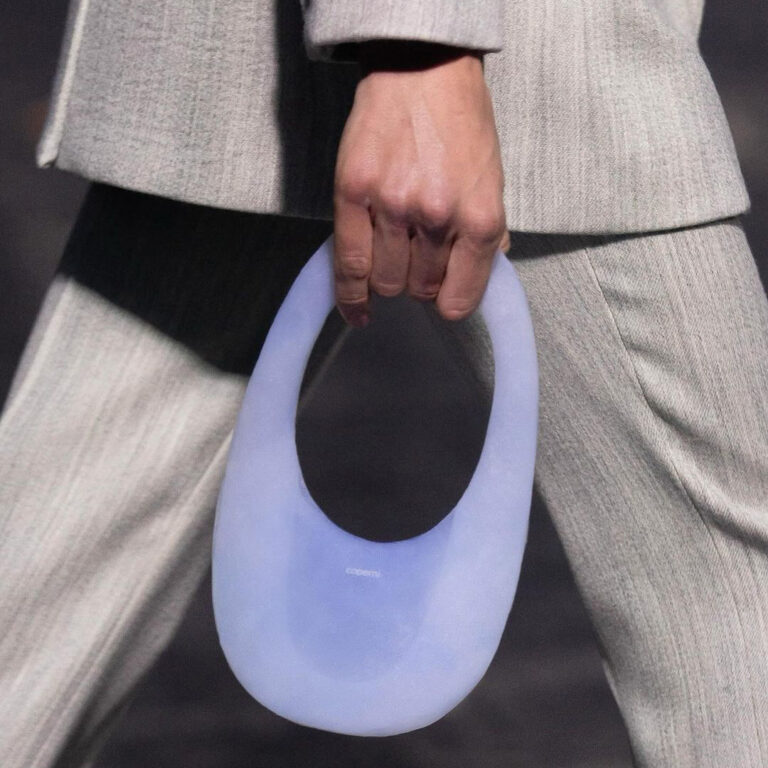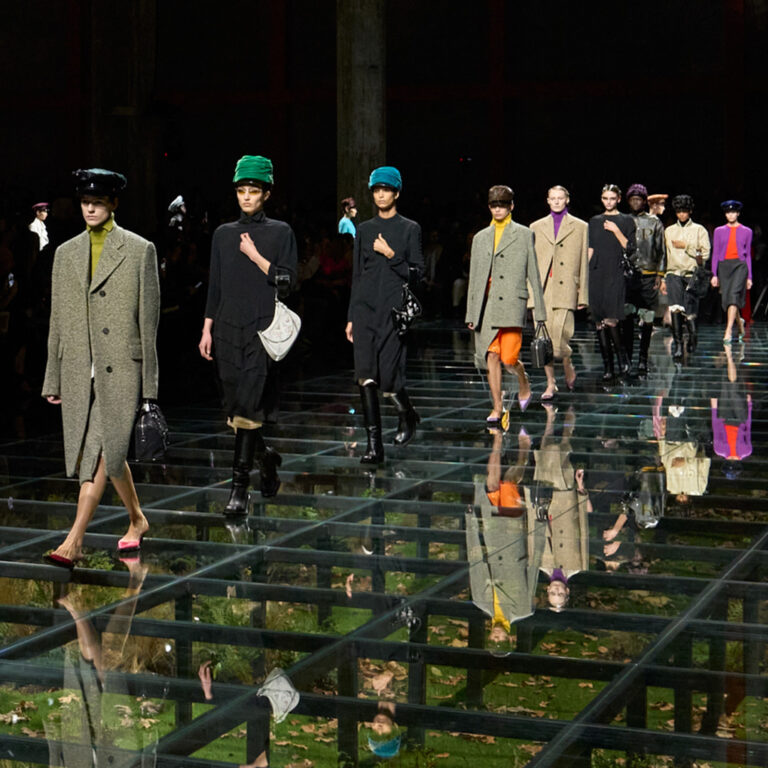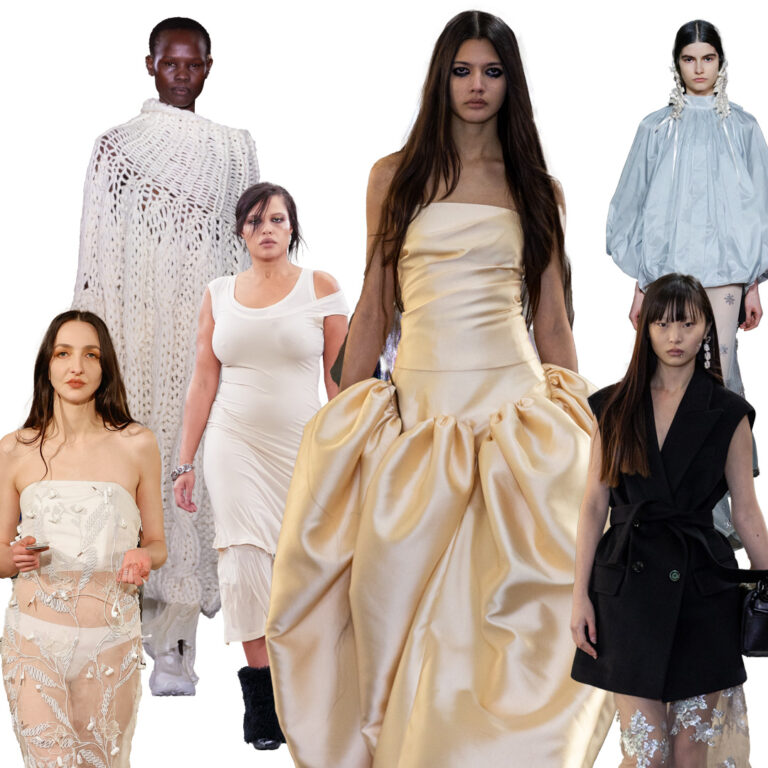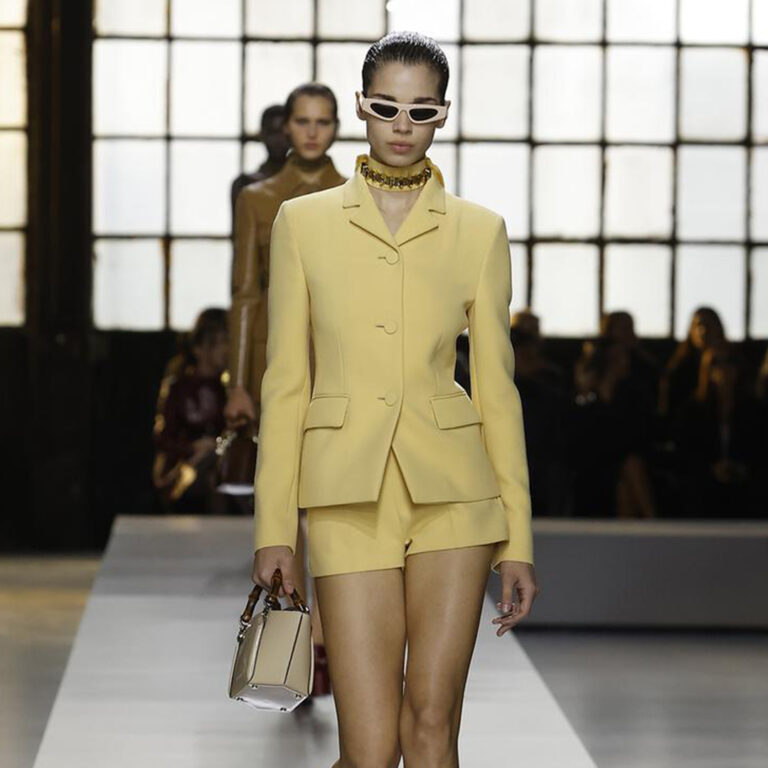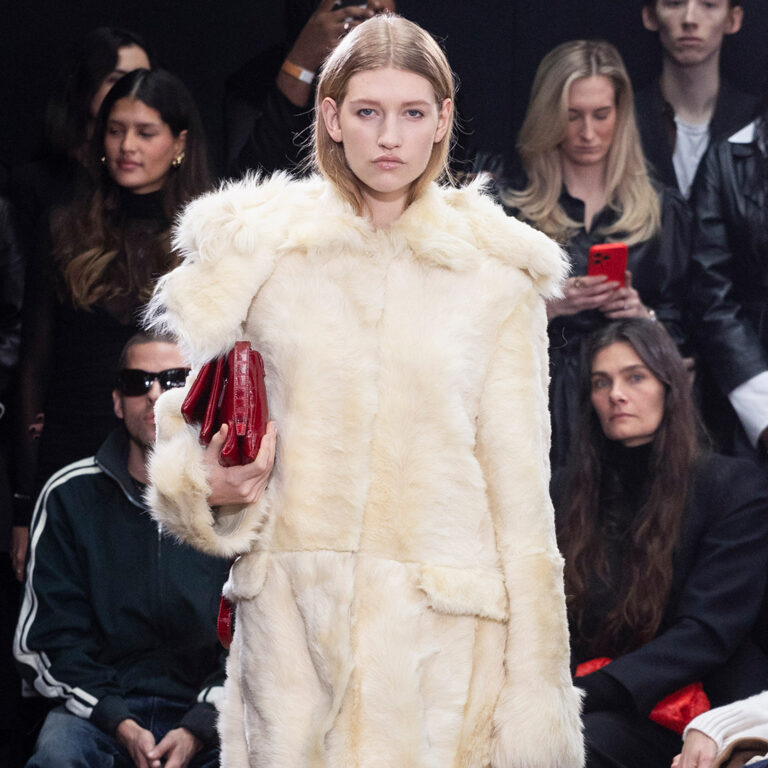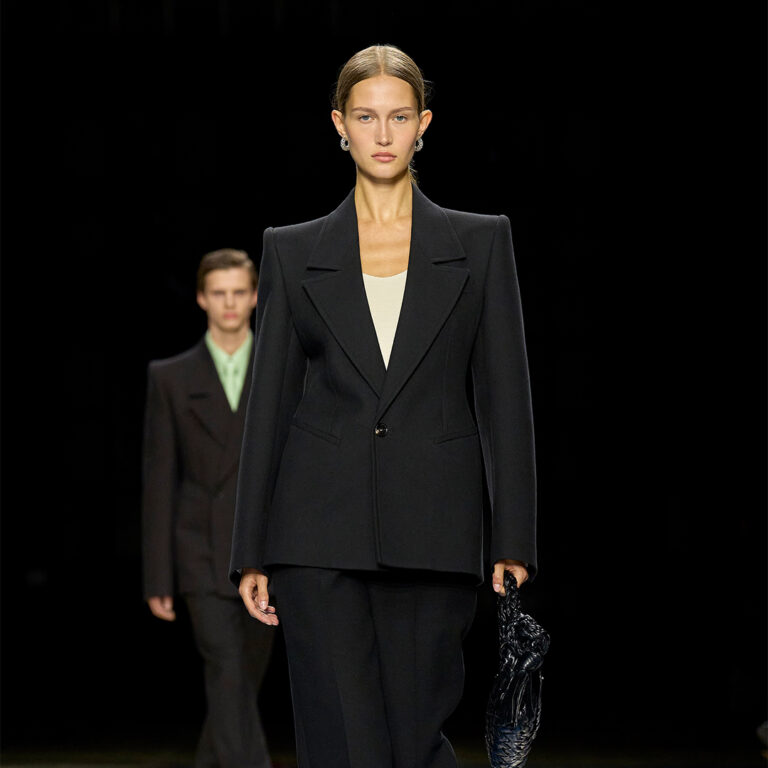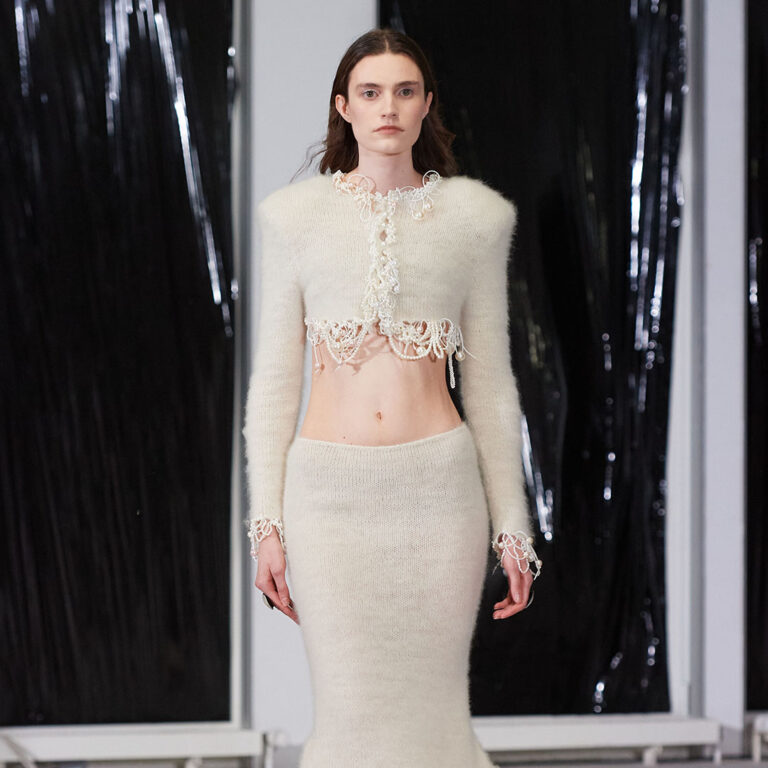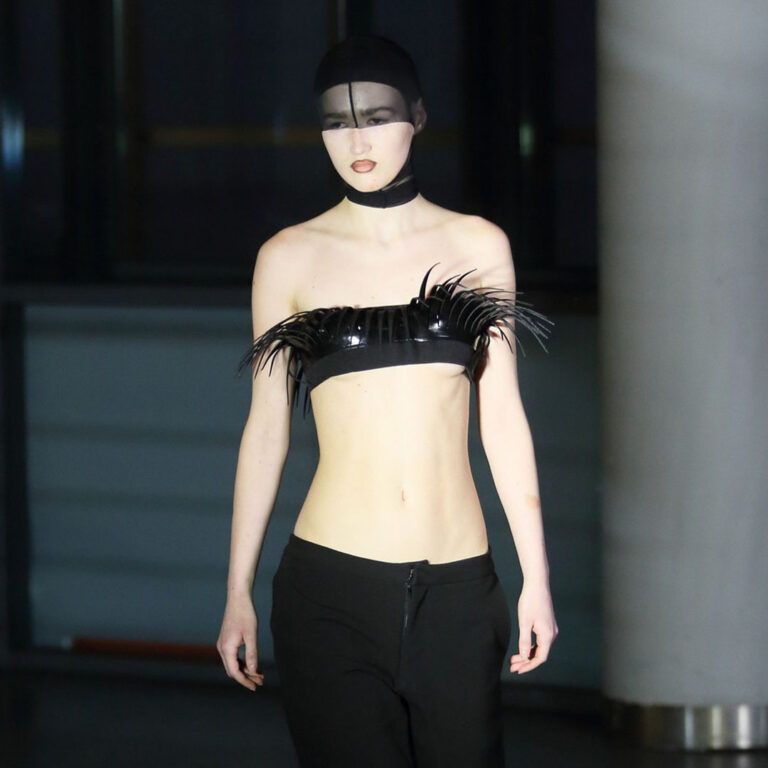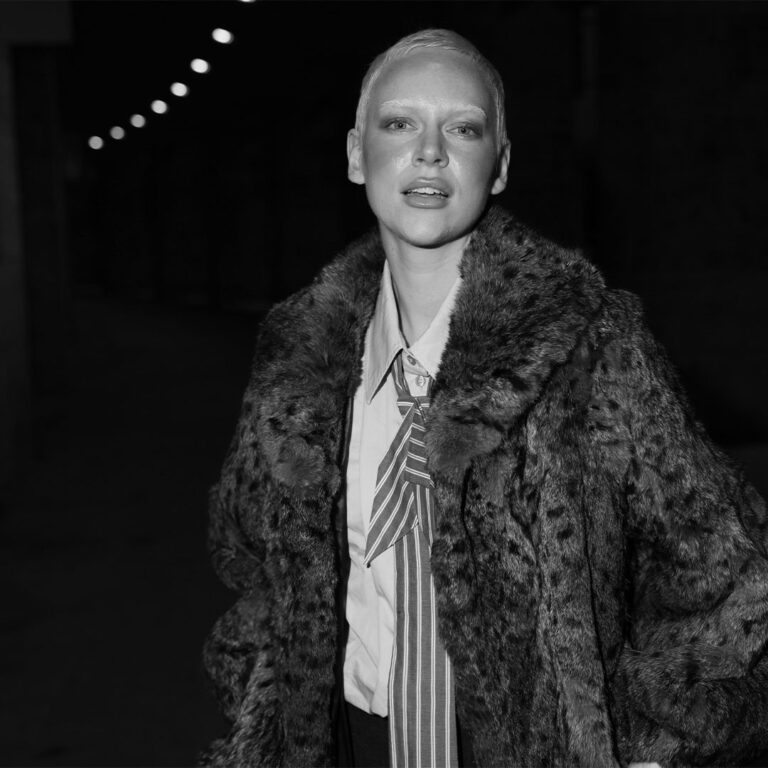Fashion designer Ronald van der Kemp (1964) is working very hard on improving the sustainable standards of the fashion industry. While it doesn’t go without any hurdles, he keeps going strong in being the ideal example for other fashion designers since the last five years. He adds: “Life starts at 50.”
Cover photo: © Ronald van der Kemp on Instagram
Ronald van der Kemp
Fashion designer Ronald van der Kemp has always been a kind of outsider. After high school, he studied ballet, since he always “had the urge to do things boys don’t do. I used to be a bit like Billy Elliot.” After ballet school, he decided that he didn’t want to be a ballet dancer. “When you’re a ballet dancer, you retire at age 35. In the fashion industry, life starts after 50.”
https://www.instagram.com/p/BtgP0vlDu6n/
Early career in fashion
At an age of 25, Van Der Kemp decided to go to the Rietveld academy (art academy, red.), where he suddenly wasn’t an outsider anymore. After his graduation he started to work in the fashion industry. “I got hired at Bill Blass, an American version of Yves Saint Laurent at that time. He was very up and coming 25 years ago. I moved to New York City and stayed for 9 years. I was in love with his clients. They were true couture lovers, who saved money for Blass’s pieces. We made only two collections a year and that was enough. Those were great times.”
“I don’t want to fit in.”
When Ronald van der Kemp was 30 years old, he got hired at Barney’s as the primary designer for their private label. After a few years, he went back to Europe, to Paris, succeeding Alber Elbaz at Guy Laroche. Van Der Kemp was talked about as the “new Tom Ford“, the pressure was high. However, after a few months he got fired because he didn’t get along with the new CEO. “It was hard, because I felt very rejected.”
In 2003, designer Michael Kors asked Van Der Kemp whether he wanted to work with him at Céline. Of course he agreed. After Céline, Van Der Kemp worked at Escada and Wolford for a couple of years.
The start of RVDK
After working at Escada, fashion designer Ronald van der Kemp started his own label. Not as it is today, but more as a consultancy firm. While he produced some clothes under his own label, he mainly lived form consultancy jobs for other major fashion labels. He designed, did creative direction and so on. Because he didn’t agree with the fashion industry, he decided to magnify his own label.
https://www.instagram.com/p/BoOimQyCAXU/
The turning point came when he was in Escada’s show room and saw all the color-coordinated sets and collections. Hanging there in major numbers per piece. He felt sad and realized these clothes didn’t have a soul. “I worked according to a formula, there was no adventure and no love. We also did about 10 collections a year and I couldn’t do it anymore. I just needed clothes with a soul.” When he visited a vintage store in New York City, he knew he had to quit his consultancy job at Escada. He looked at the vintage clothes that were made with love, out of beautiful fabrics. “These were the type of clothes you want to keep in your closet, rather that replacing them by others after a few months.”
Ronald van der Kemp started to produce clothes piece by piece. They became part of a wardrobe, rather than a collection. Van Der Kemp collected many leftover fabrics from big designer labels over the years. From old garments (that weren’t sold either), he developed new fabrics as well. His best friend – and famous photographer – Inez van Lamsweerde, loved his first designs and he decided to do a presentation in Paris. Around 10 press people attended and they all loved it – RVDK became an instant success. Stylists from all over the world now know how to find him.
https://www.instagram.com/p/BpChIY6iVih/
Disagreement with the fashion industry
“Today’s mass collections move me. It hurts to see that designers such as Karl Lagerfeld create over 10 collections a year. Brands like Chanel follow high street fashion brands like H&M, while it should be the other way around.” The strange thing is, however, that Chanel is never on sale. “Both Chanel and Hermès burn their leftovers. We now know that Burberry does so as well. It’s been a big scandal lately. It’s insane because growth seems to be the most important, instead of creating beautiful, lasting pieces and no one wants to talk about it.”
This is a major problem, according to Van Der Kemp, because “clients have become Instagram-obsessed, without having a personal opinion. Unfortunately, the Kardashians are an example for many. They’ve reinvented the fashion industry in a bad way. Many women today want to look like an Instagram filter and that’s a sad thing.” He adds: “You should rather look at yourself and think: what characterizes my personality? A fashion designer should set the tone, while you should develop your style by yourself.”
“The way I dress women makes them feel comfortable.”
Diversity in the fashion industry
Ronald van der Kemp says he tries to design for all different body types. However, his pieces are made one-by-one. Therefore, diversity in terms of body types is not his number one priority. It would make his job too difficult, he says. “However, I try to cast as many different types of girls as possible. The only thing is that they’re all skinny. I hope to work on this topic in the future. My main concern for now is to change the way the fashion industry works. I have to focus on this problem first.”
Check out some of RVDK’s work below.
https://www.instagram.com/p/BrQd2u5gQqF/
https://www.instagram.com/p/BrQC_Ygg2_v/
https://www.instagram.com/p/Bq-cNAxALi7/
https://www.instagram.com/p/BqE4SBwgZUd/
https://www.instagram.com/p/Bp1rubdAe9c/
You will also like:


